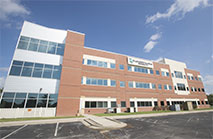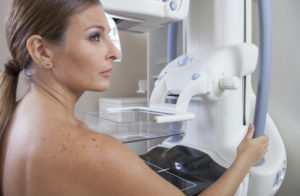When Your Radiologist Orders A Biopsy
 While there is much that can be discovered about the breast through the range of diagnostic imaging, sometimes the only next step available is a biopsy. We’ve mentioned biopsies at times in prior posts, but haven’t gone into detail. You may have a general understanding of what a biopsy entails, but information is one of the keys to dealing with anxiety. Today we thought we’d break it down for you – the short, sweet tale of the biopsy.
While there is much that can be discovered about the breast through the range of diagnostic imaging, sometimes the only next step available is a biopsy. We’ve mentioned biopsies at times in prior posts, but haven’t gone into detail. You may have a general understanding of what a biopsy entails, but information is one of the keys to dealing with anxiety. Today we thought we’d break it down for you – the short, sweet tale of the biopsy.
As diagnostic radiologists, we sometimes send patients to have biopsies to get a tissue diagnosis. There are lots of reasons we might recommend a biopsy, but remember even when findings are worrisome, the majority (around 65-70%) will turn out to be benign or noncancerous. A biopsy requires a breast team which may include surgeons, breast radiologists, pathologists, nurses and radiology technologists. A pathologist is a doctor who specializes in diagnosis of disease by examining a tissue sample and will give the final diagnosis after studying the tissue.
Obtaining Tissue Samples
To get the tissue sample, there are two basic techniques, one using special needles and the other a surgical technique. Biopsies are quick: outpatient (home the same day!) and requiring only a local anesthetic. A small amount of bruising may occur at the site of the biopsy, as it is a minimally invasive procedure.
Needle Biopsy
Tissue samples are taken in a variety of ways, depending upon the patient and the location of what needs to be biopsied. If, for instance, there’s a palpable lump, the biopsy can be done without imaging. More often, a mammogram, ultrasound, or (rarely) MRI might be used to help guide the needle to the exact place of concern. Several samples are taken of the area in question through the needle with a marker placed at the biopsy site to mark it for future reference when the biopsy is done.
Surgical Biopsy
A surgical biopsy is somewhat more invasive, and may also need imaging guidance. Most times a needle biopsy is the first move, but occasionally a needle biopsy will need to be followed by removal of more tissue with a surgical biopsy. This can happen if the pathologist doesn’t get enough tissue to make a confident diagnosis or when particular conditions are found on needle biopsy, often those things that might be precancerous. In a surgical biopsy a cut or incision is made in the breast and the area in question is removed, often with a marker placed as with the needle biopsy.
Steps Toward Better Health
If you need a biopsy and are nervous, that’s understandable and okay. No one loves a needle. However – and this is important – it’s a relatively straightforward procedure that can give you the answers you need. Take it one step at a time, bring a supportive friend or relative and know your breast team will be focused on giving you the care you need!
Image credit: Needle Biopsy; Author: Linda Bartlett (photographer) via NCI Visuals Online; Copyright: public domain
Originally published 8/8/13 on mammographykc.com.





